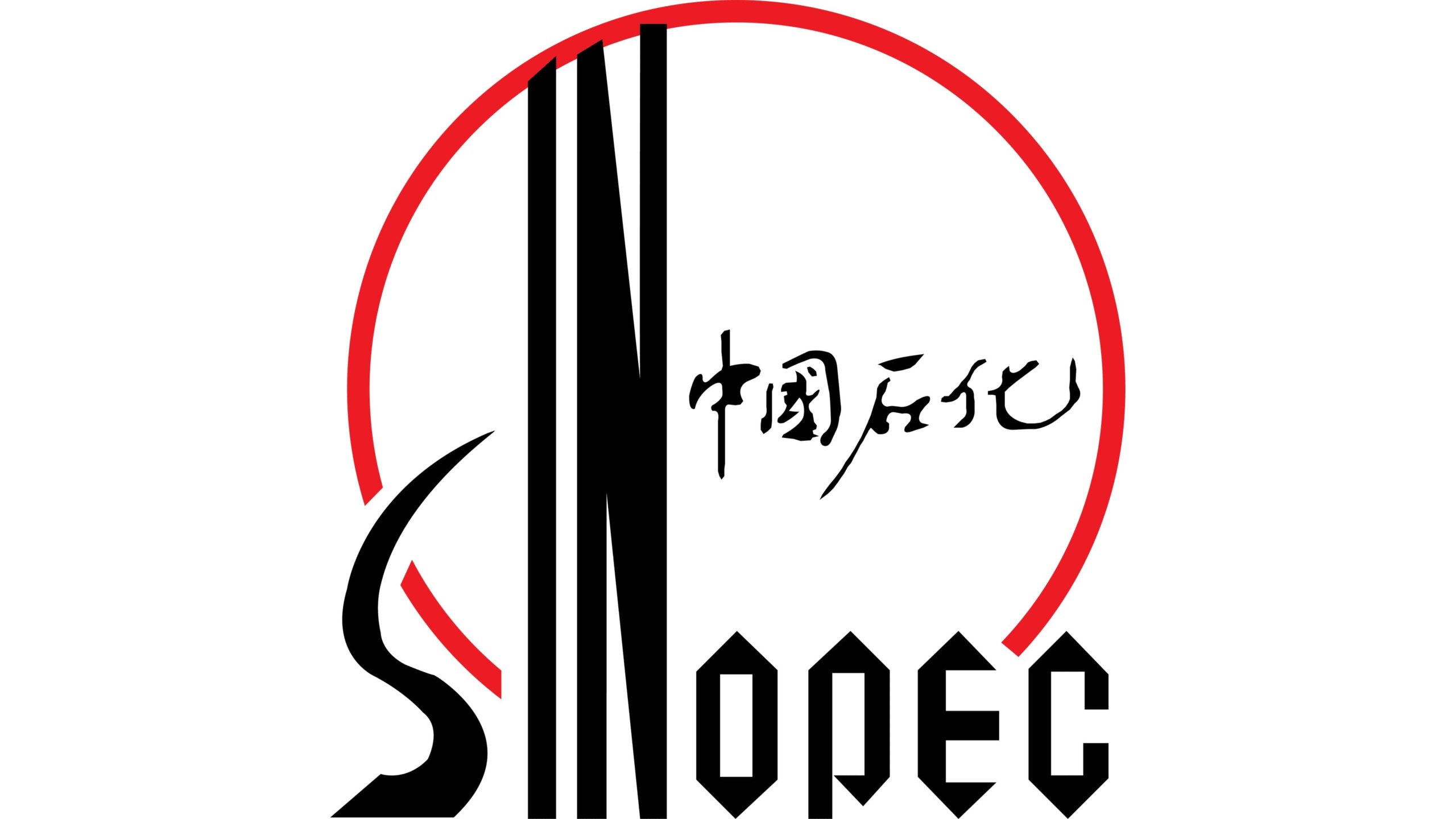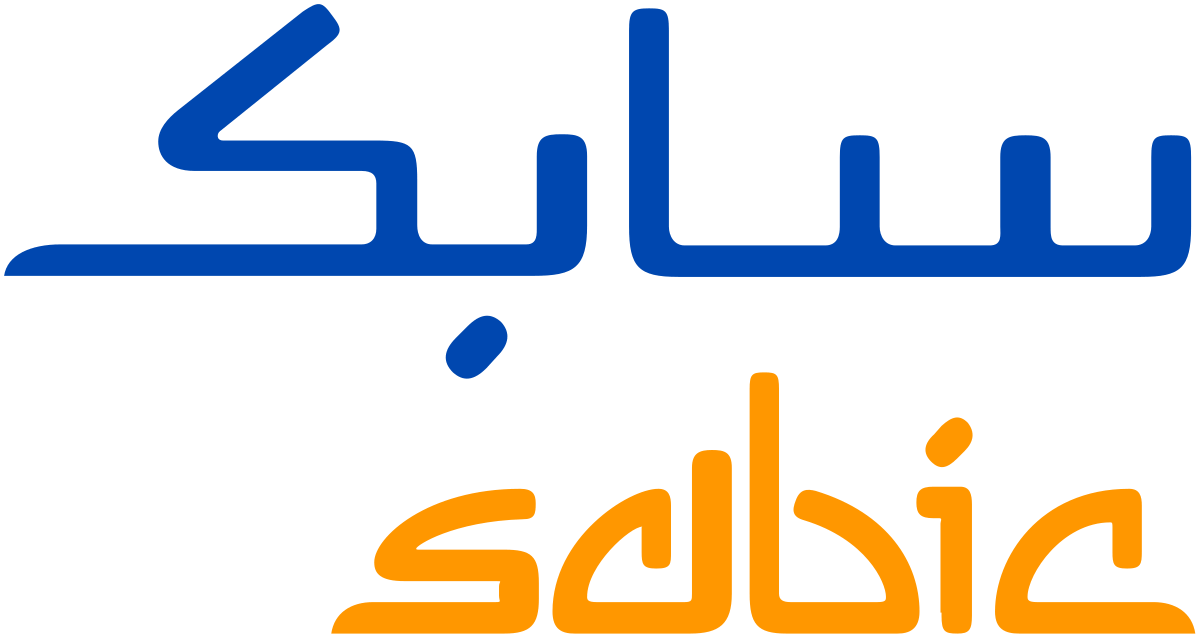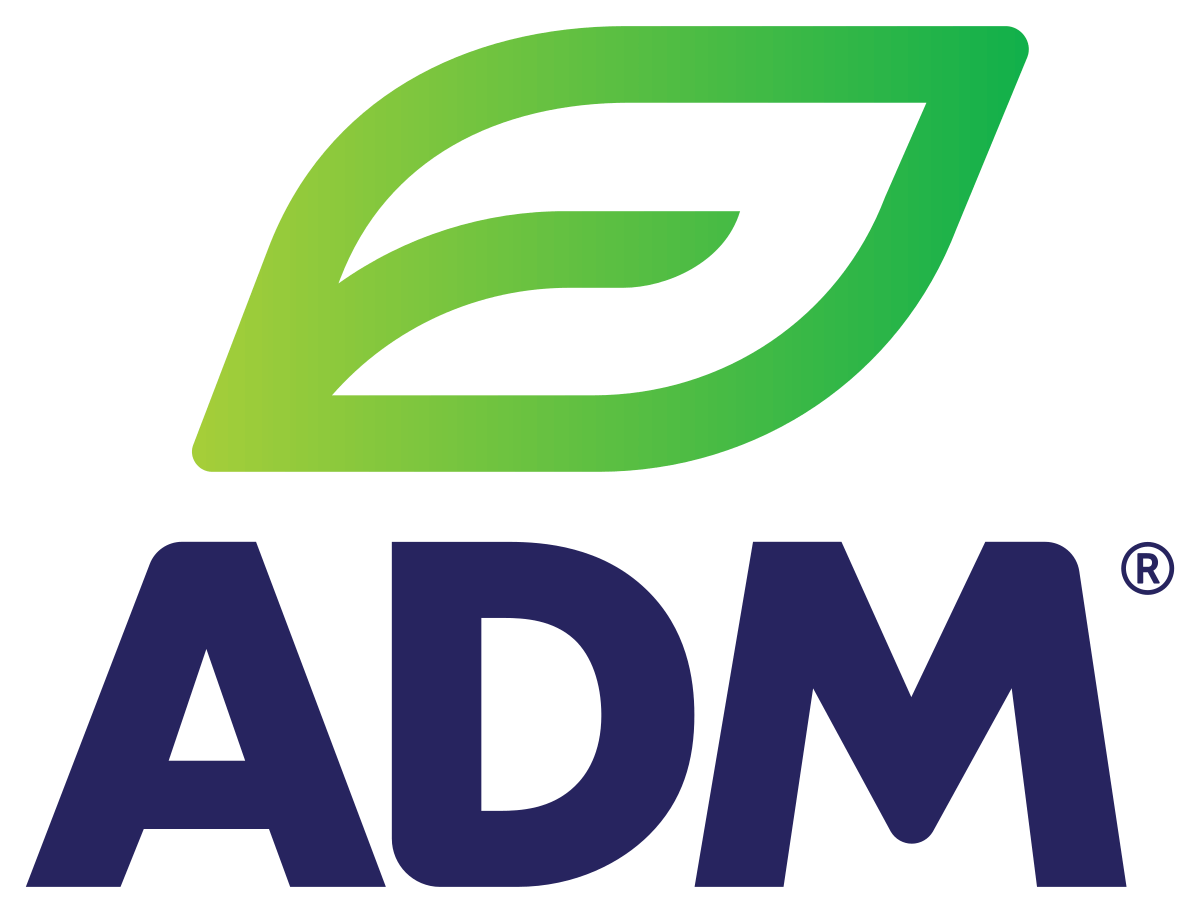Global Synthetic Yarn Market: By Yarn Type, By Fiber Type, By End User Products, By Application, By Region & Segmental Insights Trends and Forecast, 2024 – 2034
- Industry: Chemicals & Materials
- Report ID: TNR-110-1178
- Number of Pages: 420
- Table/Charts : Yes
- June, 2024
- Base Year : 2024
- No. of Companies : 10+
- No. of Countries : 29
- Views : 10121
- Covid Impact Covered: Yes
- War Impact Covered: Yes
- Formats : PDF, Excel, PPT
Synthetic yarn refers to fibres manufactured from synthetic or man-made materials rather than natural sources like cotton or wool. Common synthetic fibres used in yarn production include polyester, nylon, acrylic, and polypropylene. These fibres are engineered to exhibit specific properties such as durability, strength, elasticity, and resistance to moisture, chemicals, and UV radiation. Synthetic yarns are produced through processes such as extrusion, where the molten polymer is forced through spinnerets to form continuous filaments that are then twisted together to create yarns of varying thicknesses and strengths.
They find extensive applications across industries including textiles, automotive, aerospace, and industrial sectors due to their versatility and performance characteristics. Synthetic yarns are favored for their cost-effectiveness, ease of care, and ability to mimic natural fibres while offering superior performance in terms of durability and functionality in diverse applications worldwide.
The demand for synthetic yarn is driven by the versatility and performance attributes of synthetic fibres like polyester, nylon, and acrylic. These fibres are known for their exceptional strength-to-weight ratio, durability, and resistance to moisture, chemicals, and abrasion, making them ideal for a wide range of applications. In the textile industry, synthetic yarns are extensively used for producing apparel, home textiles, and technical textiles due to their ability to create fabrics with desirable properties such as wrinkle resistance, colourfastness, and stretchability.
Moreover, the automotive sector relies on synthetic yarns for upholstery fabrics, carpets, and interior components, benefiting from their durability and ease of maintenance. Additionally, the growth in demand for technical textiles, including medical textiles and protective clothing, further drives the market for synthetic yarns, which offer innovative solutions to meet evolving consumer needs for performance, comfort, and sustainability. These factors collectively contribute to the expanding global demand for synthetic yarns across diverse industrial applications.
In terms of revenue, the global synthetic yarn market was worth US$ 306.5 Bn in 2023, anticipated to witness CAGR of 5.2% during 2024 – 2034.
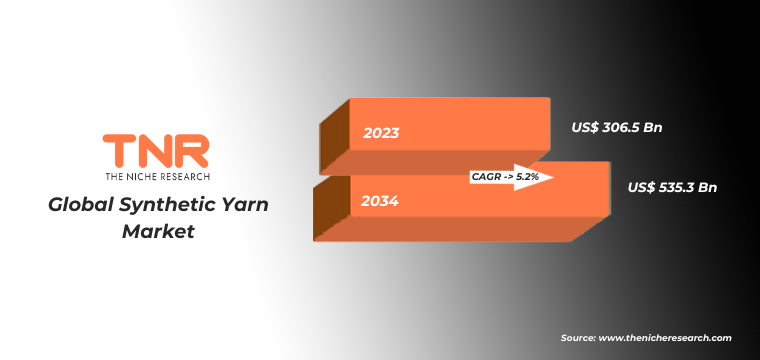
Global Synthetic Yarn Market Dynamics
- Growing Demand in Textile Industry: The textile industry drives significant demand for synthetic yarns due to their versatility, durability, and cost-effectiveness in producing a wide range of fabrics and garments for apparel, home textiles, and technical textiles.
- Automotive Sector Expansion: Increasing automotive production worldwide fuels demand for synthetic yarns used in upholstery, carpets, and interior components due to their strength, colourfastness, and resistance to wear and tear.
- Rise in Technical Textiles: The demand for technical textiles, such as geotextiles, medical textiles, and protective clothing, continues to grow, driven by advancements in materials offering functionalities like flame resistance, UV protection, and moisture management, which synthetic yarns provide.
- Innovation in Sustainable Fibers: The shift towards sustainability encourages innovation in synthetic yarns, including recycled polyester and bio-based fibres, meeting consumer and regulatory demands for eco-friendly alternatives.
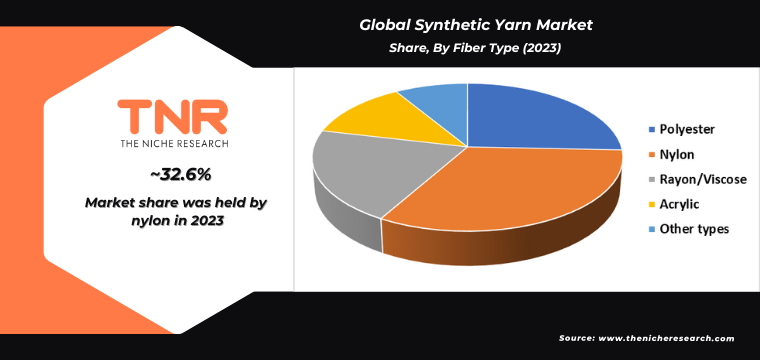
Filament Segment is Projected as the Fastest Growing Segment in the Global Synthetic Yarn Market During the Forecast Period (2024 – 2034).
Filament synthetic yarns, made from continuous strands of synthetic fibres such as polyester, nylon, and acrylic, offer exceptional strength, durability, and consistency compared to staple fibres. In the textile industry, filament yarns are favored for their smooth texture and ability to create fabrics with a luxurious feel, making them ideal for apparel, home furnishings, and technical textiles.
The automotive sector utilizes filament synthetic yarns in upholstery fabrics, carpets, and interior trims due to their durability, colourfastness, and resistance to abrasion and fading. Additionally, the growing demand for technical textiles in sectors like healthcare, sports, and outdoor gear drives the use of filament synthetic yarns for applications requiring moisture management, UV resistance, and antimicrobial properties. As consumer preferences evolve towards performance-oriented and sustainable products, filament synthetic yarns continue to play a pivotal role in meeting these demands while offering innovative solutions in manufacturing and product development globally.
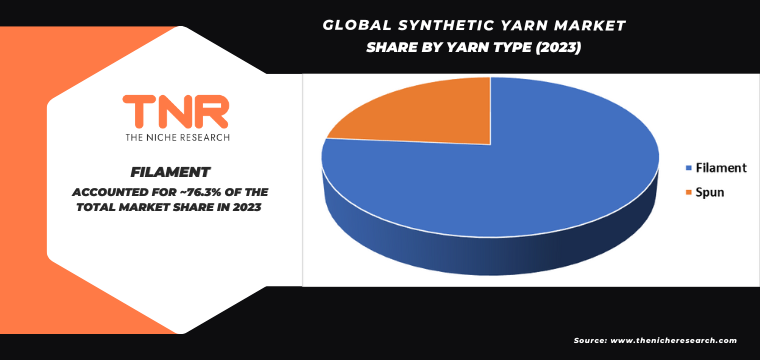
By End Use Industry, Automotive Segment had the Highest Share in the Global Synthetic Yarn Market in 2023.
In the automotive and transportation sectors, synthetic yarns serve as critical components due to their versatility, durability, and performance-enhancing characteristics. The Primary driver for synthetic yarns in automotive industry is the trend towards lightweighting vehicles to improve fuel efficiency and reduce emissions. Materials like polyester and nylon are preferred for their high strength-to-weight ratios, making them ideal for producing lightweight fabrics used in automotive interiors, seating upholstery, and carpeting.
These yarns contribute to enhancing vehicle comfort, durability, and aesthetics while meeting stringent safety and regulatory standards. Moreover, synthetic yarns offer superior resistance to abrasion, moisture, and UV exposure, making them suitable for exterior applications such as automotive upholstery and convertible tops. Additionally, the growth in electric vehicles (EVs) further drives demand for synthetic yarns, as lightweight materials are crucial for extending battery range and optimizing vehicle performance. As automotive manufacturers continue to innovate towards sustainable and efficient transportation solutions, synthetic yarns play a pivotal role in advancing the next generation of automotive technologies across North America and beyond.
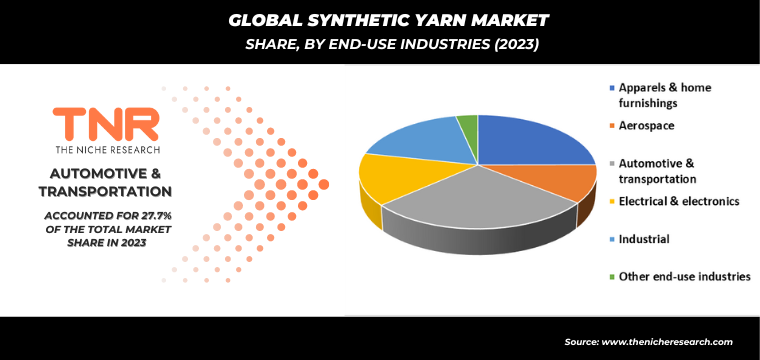
North America by Region Dominated the Global Synthetic Yarn Market in 2023.
North America has garnered major market share in synthetic yarn market in 2023. One significant demand driver is the versatility and performance attributes of synthetic yarns such as polyester, nylon, and acrylic. These fibres offer superior strength, durability, and resistance to moisture and chemicals compared to natural fibres, making them ideal for a wide range of applications. The apparel industry benefits from synthetic yarns for producing athleisure wear, activewear, and performance garments that require moisture-wicking properties and stretchability.
Moreover, the automotive sector utilizes synthetic yarns in upholstery fabrics and interior components due to their durability and ease of maintenance. Additionally, the growing popularity of home furnishings and technical textiles further boosts demand for synthetic yarns, which offer innovative solutions in areas such as flame resistance, UV protection, and antimicrobial properties. As industries continue to innovate and expand their product offerings, synthetic yarns remain essential for meeting evolving consumer preferences and performance standards in North America.
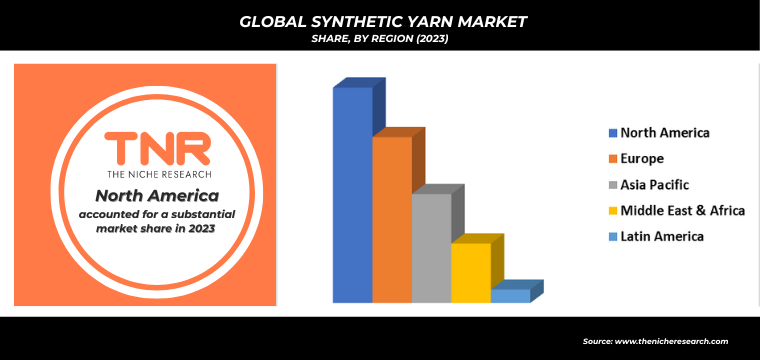
Competitive Landscape: Global Synthetic Yarn Market:
- Aksa Akrilik Kimya
- DuPont
- Eastman Chemical Company
- Indorama Ventures Public company Limited
- Kuraray Co., Ltd.
- Lenzing Group
- Mitsubishi Chemical Corporation
- Reliance industries Limited
- Teijin Limited
- Toray Industries Inc.
- Zhejiang Hengyi Group Ltd.
- Other Industry Participants
Global Synthetic Yarn Market Scope
| Report Specifications | Details |
| Market Revenue in 2023 | US$ 306.5 Bn |
| Market Size Forecast by 2034 | US$ 535.3 Bn |
| Growth Rate (CAGR) | 5.2% |
| Historic Data | 2016 – 2022 |
| Base Year for Estimation | 2023 |
| Forecast Period | 2024 – 2034 |
| Report Inclusions | Market Size & Estimates, Market Dynamics, Competitive Scenario, Trends, Growth Factors, Market Determinants, Key Investment Segmentation, Product/Service/Solutions Benchmarking |
| Segments Covered | By Yarn Type, By Fiber Type, By End User Products, By Application, By Region |
| Regions Covered | North America, Europe, Asia Pacific, Middle East & Africa, Latin America |
| Countries Covered | U.S., Canada, Mexico, Rest of North America, France, The UK, Spain, Germany, Italy, Nordic Countries (Denmark, Finland, Iceland, Sweden, Norway), Benelux Union (Belgium, The Netherlands, Luxembourg), Rest of Europe, China, Japan, India, New Zealand, Australia, South Korea, Southeast Asia (Indonesia, Thailand, Malaysia, Singapore, Rest of Southeast Asia), Rest of Asia Pacific, Saudi Arabia, UAE, Egypt, Kuwait, South Africa, Rest of Middle East & Africa, Brazil, Argentina, Rest of Latin America |
| Key Players | Aksa Akrilik Kimya, DuPont, Eastman Chemical Company, Indorama Ventures Public company Limited, Kuraray Co., Ltd., Lenzing Group, Mitsubishi Chemical Corporation, Reliance industries Limited, Teijin Limited, Toray Industries Inc., Zhejiang Hengyi Group Ltd. |
| Customization Scope | Customization allows for the inclusion/modification of content pertaining to geographical regions, countries, and specific market segments. |
| Pricing & Procurement Options | Explore purchase options tailored to your specific research requirements |
| Contact Details | Consult With Our Expert
Japan (Toll-Free): +81 663-386-8111 South Korea (Toll-Free): +82-808- 703-126 Saudi Arabia (Toll-Free): +966 800-850-1643 United Kingdom: +44 753-710-5080 United States: +1 302-232-5106 E-mail: askanexpert@thenicheresearch.com
|
Global Synthetic Yarn Market
By Yarn Type
- Filament
- Spun
By Fiber Type
- Polyester
- Nylon
- Rayon/Viscose
- Acrylic
- Other types
By End-use Industries
- Apparels & home furnishings
- Aerospace
- Automotive & transportation
- Electrical & electronics
- Industrial
- Other end-use industries
By Region
- North America (U.S., Canada, Mexico, Rest of North America)
- Europe (France, The UK, Spain, Germany, Italy, Nordic Countries (Denmark, Finland, Iceland, Sweden, Norway), Benelux Union (Belgium, The Netherlands, Luxembourg), Rest of Europe)
- Asia Pacific (China, Japan, India, New Zealand, Australia, South Korea, Southeast Asia (Indonesia, Thailand, Malaysia, Singapore, Rest of Southeast Asia), Rest of Asia Pacific)
- Middle East & Africa (Saudi Arabia, UAE, Egypt, Kuwait, South Africa, Rest of Middle East & Africa)
- Latin America (Brazil, Argentina, Rest of Latin America)
Report Layout:
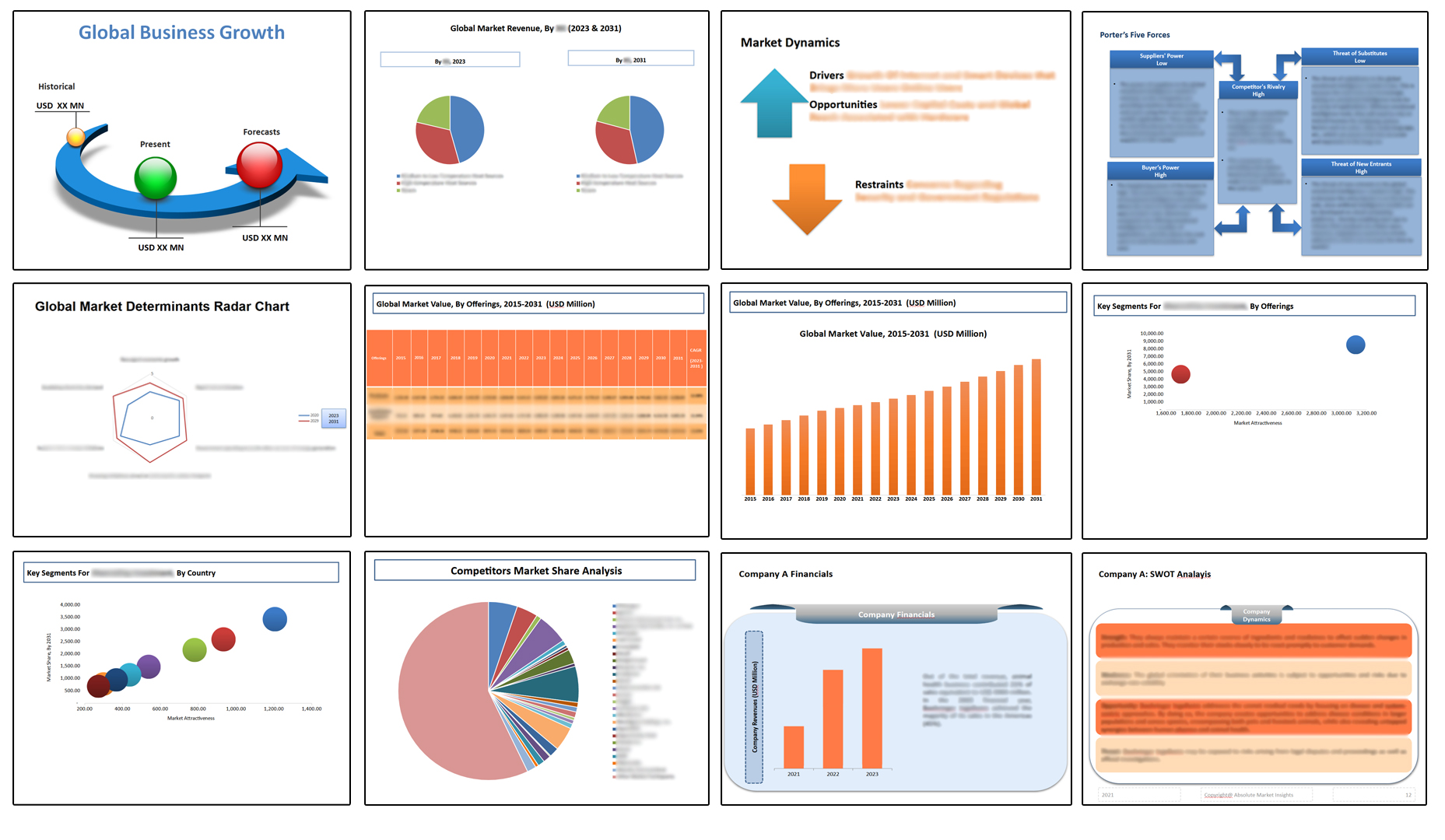
Table of Contents
Note: This ToC is tentative and can be changed according to the research study conducted during the course of report completion.
**Exclusive for Multi-User and Enterprise User.
Global Synthetic Yarn Market
By Yarn Type
- Filament
- Spun
By Fiber Type
- Polyester
- Nylon
- Rayon/Viscose
- Acrylic
- Other types
By End-use Industries
- Apparels & home furnishings
- Aerospace
- Automotive & transportation
- Electrical & electronics
- Industrial
- Other end-use industries
By Region
- North America (U.S., Canada, Mexico, Rest of North America)
- Europe (France, The UK, Spain, Germany, Italy, Nordic Countries (Denmark, Finland, Iceland, Sweden, Norway), Benelux Union (Belgium, The Netherlands, Luxembourg), Rest of Europe)
- Asia Pacific (China, Japan, India, New Zealand, Australia, South Korea, Southeast Asia (Indonesia, Thailand, Malaysia, Singapore, Rest of Southeast Asia), Rest of Asia Pacific)
- Middle East & Africa (Saudi Arabia, UAE, Egypt, Kuwait, South Africa, Rest of Middle East & Africa)
- Latin America (Brazil, Argentina, Rest of Latin America)
The Niche Research approach encompasses both primary and secondary research methods to provide comprehensive insights. While primary research is the cornerstone of our studies, we also incorporate secondary research sources such as company annual reports, premium industry databases, press releases, industry journals, and white papers.
Within our primary research, we actively engage with various industry stakeholders, conducting paid interviews and surveys. Our meticulous analysis extends to every market participant in major countries, allowing us to thoroughly examine their portfolios, calculate market shares, and segment revenues.
Our data collection primarily focuses on individual countries within our research scope, enabling us to estimate regional market sizes. Typically, we employ a bottom-up approach, meticulously tracking trends in different countries. We analyze growth drivers, constraints, technological innovations, and opportunities for each country, ultimately arriving at regional figures.Our process begins by examining the growth prospects of each country. Building upon these insights, we project growth and trends for the entire region. Finally, we utilize our proprietary model to refine estimations and forecasts.
Our data validation standards are integral to ensuring the reliability and accuracy of our research findings. Here’s a breakdown of our data validation processes and the stakeholders we engage with during our primary research:
- Supply Side Analysis: We initiate a supply side analysis by directly contacting market participants, through telephonic interviews and questionnaires containing both open-ended and close-ended questions. We gather information on their portfolios, segment revenues, developments, and growth strategies.
- Demand Side Analysis: To gain insights into adoption trends and consumer preferences, we reach out to target customers and users (non-vendors). This information forms a vital part of the qualitative analysis section of our reports, covering market dynamics, adoption trends, consumer behavior, spending patterns, and other related aspects.
- Consultant Insights: We tap into the expertise of our partner consultants from around the world to obtain their unique viewpoints and perspectives. Their insights contribute to a well-rounded understanding of the markets under investigation.
- In-House Validation: To ensure data accuracy and reliability, we conduct cross-validation of data points and information through our in-house team of consultants and utilize advanced data modeling tools for thorough verification.
The forecasts we provide are based on a comprehensive assessment of various factors, including:
- Market Trends and Past Performance (Last Five Years): We accurately analyze market trends and performance data from preceding five years to identify historical patterns and understand the market’s evolution.
- Historical Performance and Growth of Market Participants: We assess the historical performance and growth trajectories of key market participants. This analysis provides insights into the competitive landscape and individual company strategies.
- Market Determinants Impact Analysis (Next Eight Years): We conduct a rigorous analysis of the factors that are projected to influence the market over the next eight years. This includes assessing both internal and external determinants that can shape market dynamics.
- Drivers and Challenges for the Forecast Period:Identify the factors expected to drive market growth during the forecast period, as well as the challenges that the industry may face. This analysis aids in deriving an accurate growth rate projection.
- New Acquisitions, Collaborations, or Partnerships: We keep a close watch on any new acquisitions, collaborations, or partnerships within the industry. These developments can have a significant impact on market dynamics and competitiveness.
- Macro and Micro Factors Analysis:A thorough examination of both macro-level factors (e.g., economic trends, regulatory changes) and micro-level factors (e.g., technological advancements, consumer preferences) that may influence the market during the forecast period.
- End-User Sentiment Analysis: To understand the market from the end-user perspective, we conduct sentiment analysis. This involves assessing the sentiment, preferences, and feedback of the end-users, which can provide valuable insights into market trends.
- Perspective of Primary Participants: Insights gathered directly from primary research participants play a crucial role in shaping our forecasts. Their perspectives and experiences provide valuable qualitative data.
- Year-on-Year Growth Trend: We utilize a year-on-year growth trend based on historical market growth and expected future trends. This helps in formulating our growth projections, aligning them with the market’s historical performance.
Research process adopted by TNR involves multiple stages, including data collection, validation, quality checks, and presentation. It’s crucial that the data and information we provide add value to your existing market understanding and expertise. We have also established partnerships with business consulting, research, and survey organizations across regions and globally to collaborate on regional analysis and data validation, ensuring the highest level of accuracy and reliability in our reports.


